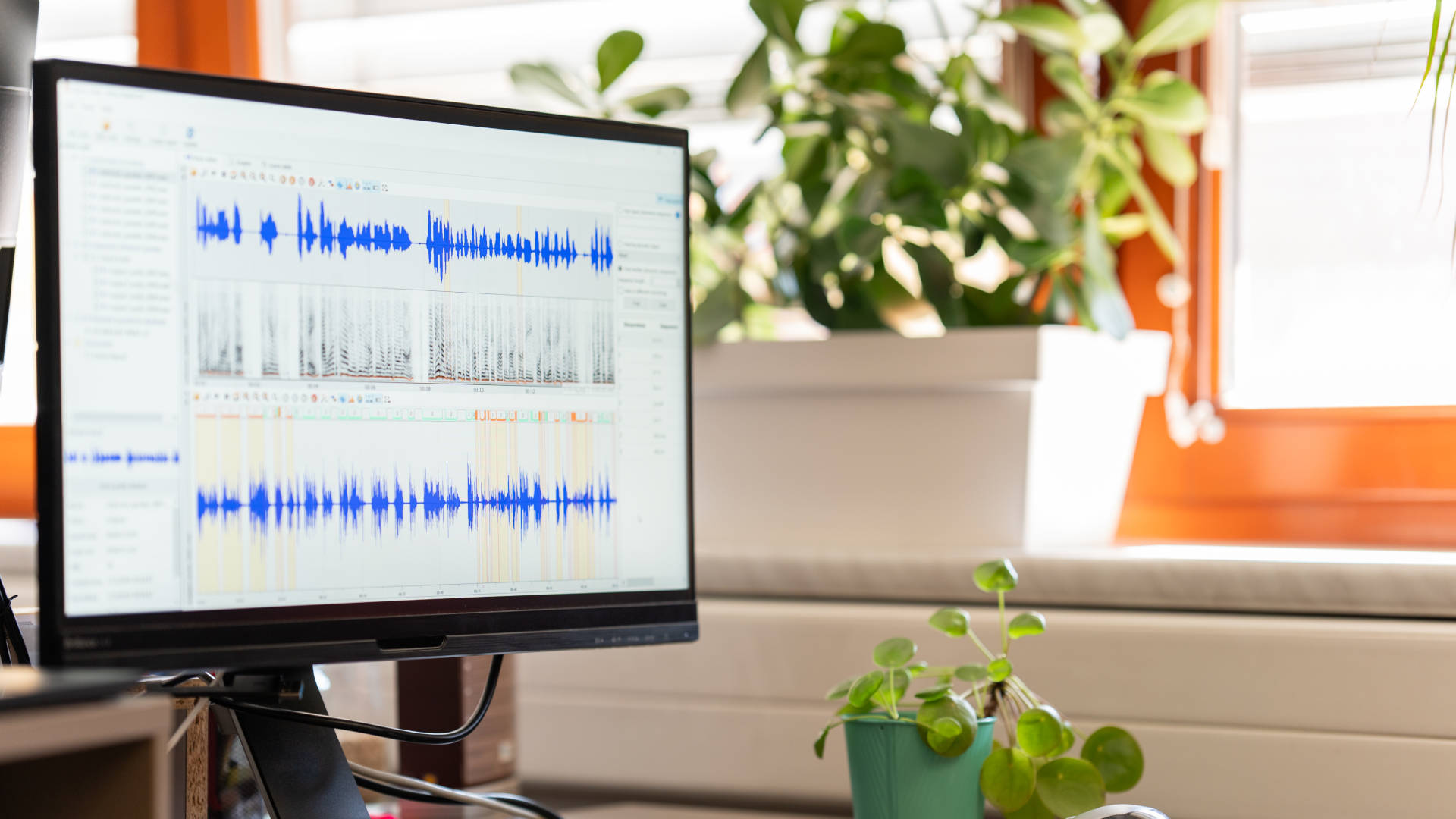Improving Call Center Metrics with Voice Biometrics and Speech Recognition

June 8, 2022
By Pavel Jiřík in Blog
More than 50% of customers across all age groups typically use the phone to reach out to a service team, making it the most common channel for customer service. This means that despite the number of support options people have access to, they are more than likely to pick up their phone and call
A consequence of this is that your team will almost certainly have plenty of calls to respond to each day. But how can you precisely monitor your agents’ performance and learn what the biggest problems for their customers are?
By keeping an eye on call center metrics that are important for your business, you can figure out what to improve to make your call center work better than ever. However, trying to improve each metric manually might not exactly be as effective as you may think.
However, with some assistance from voice biometrics and speech recognition tools, you can make both your call center far more efficient and your team’s lives a bit easier. How? Keep reading to find out.
What Are Call Center Metrics?
Call center metrics gauge the overall effectiveness of a call center through gathering and analyzing data about various aspects of the team’s performance. With this information, you can track your agents’ workload, the time it takes them to handle each call, how satisfied customers are, and a myriad of other factors.
These insights can be used later to improve how your call center functions on a daily basis. Call center metrics can also give you a clue about where your agents might be struggling, which elements of your products or services are lacking, and where your customers need more help.
Why You Should Measure Call Center Performance (But Smartly)
Looking at how many metrics and Key Performance Indicators (KPIs) are used in the call center industry, it’s easy to get confused and decide they’re not worth the effort. Or, on the contrary, that you should measure every single aspect of your call center.
However, neither approach is actually the best. Trying to monitor countless metrics is only going to result in you losing sight of what is vital for your company, while ignoring all of them means missing out on a wealth of valuable data that you could use to grow your call center.
Agent performance metrics, such as the number of calls handled or time spent on After Call Work (ACW), can tell you a lot about how productive your agents are and what you could do to help them improve. Customer satisfaction surveys,, meanwhile, show you how happy (or not) customers are with your products or services and how you might get them to stay with you for longer.
If your call center treats customers well, they’ll become loyal brand ambassadors who boost your reach and sales. But tracking call center metrics is also a good way to keep up with changing trends in the industry. By looking at this data, you can find out exactly what your customers expect from you and your team, as well as how you should modify your services or products to keep them satisfied.
All of this makes call center metrics an invaluable source of information on your business and customers, and an easily accessible one at that.
What Are the Main Call Center Metrics You Should Be Tracking?
68% of consumers say they are willing to pay more for products and services from brands that are known to offer good customer service experiences. What’s more, 93% of customers are likely to make repeat purchases with companies that provide excellent customer service.
This makes it clear just how important it is nowadays to provide outstanding customer service, and keeping track of metrics that align with your goals can help with precisely that. So here are some of the most popular metrics that are used in call centers to measure agents’ productivity and customer satisfaction.
First Contact Resolution (FCR)
FCR tracks the number of times an agent successfully handles a customer’s issue without a callback or transferring to another agent. The industry standards are 70-79% for acceptable, and anything over this is considered excellent. To calculate this number, divide the number of calls resolved successfully on the first attempt by the entire number of calls handled by agents, and multiply the result by 100 for a percentage.
A high FCR leads to higher customer satisfaction and fewer repeat calls, as well as lower costs. It’s therefore worthwhile working on this metric if yours is below the industry average.
Customer Satisfaction Score (CSAT)
CSAT shows you how happy a client is with your products, services, or customer service experience. It’s also one of the simplest methods to gauge a customer’s mood because they only need to answer “How satisfied are you with our call center service?”, for example, by picking a number on a scale from 1-5 or 1-10.
Companies also frequently use a Likert Scale to ask customers about how (dis)satisfied they are with the service or support experience.
Customer Effort Score (CES)
CES measures how much effort a customer has to put in to resolve a problem, buy or return a product, or receive an answer to their question. Basically, the easier it is for them to do something they need, the higher the score will be.
Your CES is based on the number of customers who say their interaction was easy divided by the total amount of responses, on a scale from 0 to 100.
According to a CEB study, improving a customer’s CES score from 1 to 5 (on a 7-point scale) can increase their loyalty by 22%. Also, this metric is 40% more accurate at predicting customer loyalty than traditional CSAT scores, as clients are simply far more likely to stay with a company that makes life easy for them.
Average Handle Time (AHT)
AHT is how long an agent tends to spend on a call, starting from when they pick up the phone until disconnecting. This metric allows you to estimate the average handling times for different types of calls and set a benchmark for your agents.
To calculate your AHT, add talk time to hold time and after-call tasks, then divide by the total number of calls. A typical value is around 6 minutes, depending on the industry. If yours is much longer, it might mean that agents are struggling with handling their workload or spending too much time on manual tasks.
Average Speed of Answer (ASA)
ASA measures how long it takes an agent to pick up an inbound call, including the time when their phone is ringing (but not the time the caller spends in an IVR system). To calculate this value, take the total waiting time and divide it by the number of answered calls.
The industry standard average speed of answer is generally 28 seconds. A longer duration can hurt customer satisfaction, the number of abandoned calls, and happiness among your agents, so it’s definitely something you should work on.
Percentage of Calls Blocked
With this metric, call center owners can learn how many callers hear busy signals. Every time a customer calls and can’t reach any of your agents, it counts as a blocked call. To calculate this metric, you need to divide the number of calls that do not reach an agent by the number of all incoming calls, and then multiply the result by 100.
Inbound call centers aim to keep their number of blocked calls below 2%. A higher value suggests that many customers are not getting their issues resolved, either because there aren’t enough agents or the platform you are using is overloaded.
Average Call Abandonment Rate
The abandon rate is the percentage of calls that customers end before they get to speak to an agent. To calculate the value for your call center, divide the number of abandoned calls by the total number of inbound calls.
Talkdesk’s 2021 global benchmarking report found the average abandonment rate in call centers to be 5.91%, but anything below 8% is generally acceptable.
How Can You Improve Call Center Metrics with the Help of Voice Biometrics?
As acquiring new customers becomes more difficult (and more expensive) with each passing year and the expectations of current ones continue to grow, call centers are constantly looking for ways to improve the customer experience they provide. That’s why reducing the time it takes a customer to reach an agent and the time it takes them to resolve the caller’s issue are so important.
The problem is that reducing these times is easier said than done. For example, if you ask your agents to “simply” spend less time on each call, they might be rushing through the calls rather than properly taking care of the customer.
You could reduce the AHT this way, but at what cost? If you are understaffed, tackling a high number of missed and abandoned calls or a slow average answer speed might seem like impossible tasks as well.
Here’s where voice biometrics and speech recognition solutions can come in handy, helping boost your call center metrics while also giving agents some time to breathe.
Biometric voice recognition uses the innate biological characteristics of a person’s voice to create a unique voiceprint that is compared with the caller’s voice during every call. Since this voiceprint is based on hundreds of different traits, it offers extremely accurate and fast verification of a caller’s speech.
Even better, using voice verification is much easier for users than remembering passwords or answers to security questions. Speech recognition, meanwhile, converts human speech into plain text that computers can understand, process, and then either analyze further or feed into a conversational voicebot that interacts with the caller.
But how exactly can those two technologies improve your call center metrics?
- They shorten verification time to a few seconds only and thus significantly reduce the AHT. If your agents spend, let’s say, 30 seconds authenticating each customer, the total time savings from implementing voice biometrics will be huge.
- By spending less time verifying callers, agents can focus on responding to customers’ needs better and addressing all of their questions or issues.
- A drastic cut to the verification time also means that an agent can get round to their next call much faster, lowering the hold time and the number of blocked or abandoned calls.
- In addition, voice biometrics makes it far easier to verify customers, as they don’t have to remember passwords, logins, pin codes, or security answers (or frantically search for them). All they need to do is speak to their phones.
- Since voice is also one of the most secure verification methods, it makes customers feel more at ease when calling for support and also helps call centers fight telecom fraud cases.
- Thanks to speech recognition, modern chatbots and IVR menus can understand what customers are saying (and the context) and immediately reply to them. This means a customer can simply ask the chatbot for help, for example, about their order status. By “employing” a chatbot to answer various simple and repetitive questions, call center agents can focus solely on customers with more complicated issues or questions.
All of these benefits can significantly boost your customers’ (and your agents’) satisfaction, making them more likely to stay with your company for longer. Example? According to research, voice biometrics can reduce the AHT by 25 to 45 seconds and save companies as much as $10 per call.
Many companies also found that their customers are more than happy to opt into voice biometrics because of how convenient it is and for stronger security. And as they can be enrolled and verified in the background just by speaking on the phone thanks to passive voice biometrics, this method is even simpler for them.
Conclusion
In today’s world, keeping an eye on call center performance by analyzing and tweaking your metrics is vital. But try as you might, you won’t be able to improve everything yourself.
With the help of voice biometrics and speech recognition, lowering your average handle and on-hold times while boosting customer satisfaction is a piece of cake.
Better yet, you can make the job easier for your agents with a chatbot that has speech recognition to handle repetitive calls. At the same time, voice biometrics can verify that callers are really who they say they are in just a couple of seconds.


